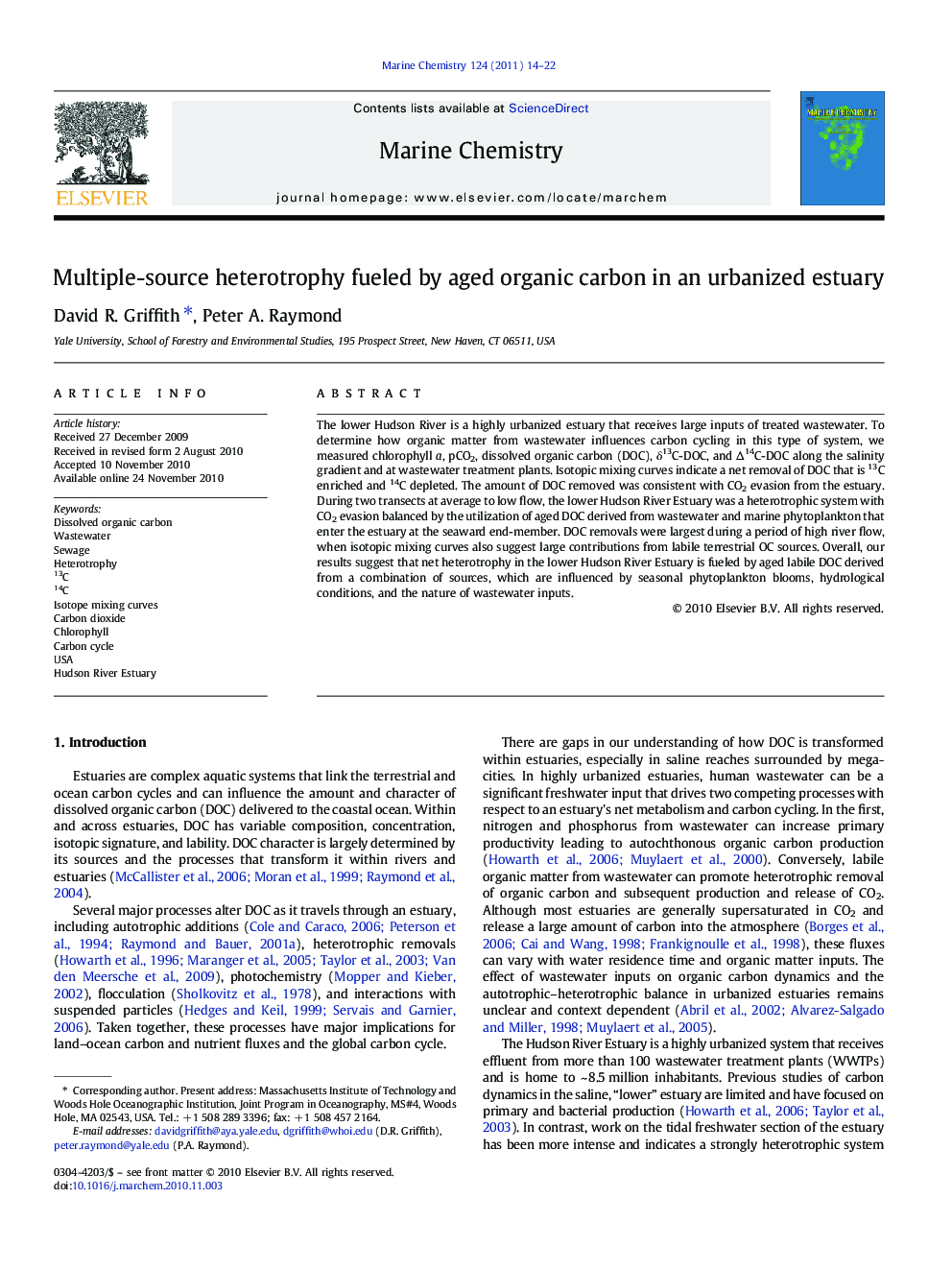| Article ID | Journal | Published Year | Pages | File Type |
|---|---|---|---|---|
| 1262095 | Marine Chemistry | 2011 | 9 Pages |
The lower Hudson River is a highly urbanized estuary that receives large inputs of treated wastewater. To determine how organic matter from wastewater influences carbon cycling in this type of system, we measured chlorophyll a, pCO2, dissolved organic carbon (DOC), δ13C-DOC, and Δ14C-DOC along the salinity gradient and at wastewater treatment plants. Isotopic mixing curves indicate a net removal of DOC that is 13C enriched and 14C depleted. The amount of DOC removed was consistent with CO2 evasion from the estuary. During two transects at average to low flow, the lower Hudson River Estuary was a heterotrophic system with CO2 evasion balanced by the utilization of aged DOC derived from wastewater and marine phytoplankton that enter the estuary at the seaward end-member. DOC removals were largest during a period of high river flow, when isotopic mixing curves also suggest large contributions from labile terrestrial OC sources. Overall, our results suggest that net heterotrophy in the lower Hudson River Estuary is fueled by aged labile DOC derived from a combination of sources, which are influenced by seasonal phytoplankton blooms, hydrological conditions, and the nature of wastewater inputs.
